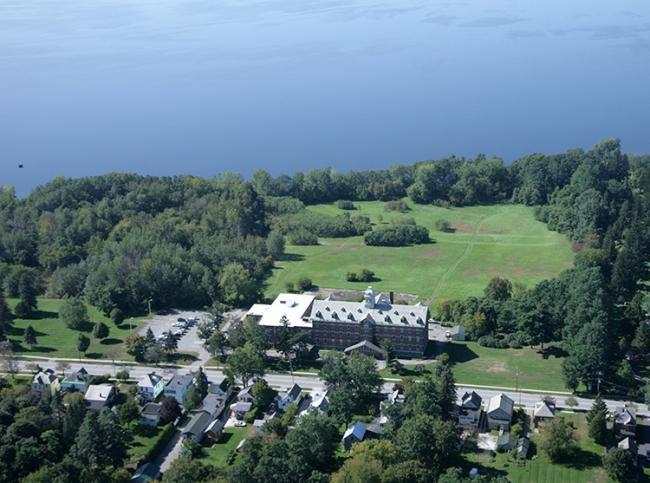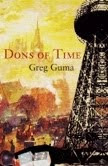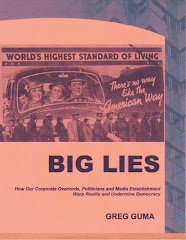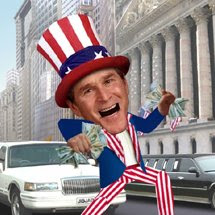This is the thirteenth chapter of
a series excerpted from “Maverick Chronicles,” a memoir-in-progress. Previous stories can be found at VTDigger. By Greg Guma
In July 1983, only weeks after
being arrested with other anti-war protesters for nonviolently blocking the gates of the GE Gatling
Gun plant in Burlington – ironically, on the orders of Progressive Mayor Bernie
Sanders -- I joined the first Witness for Peace delegation to Nicaragua, spent weeks
meeting with leaders of the Sandinista revolution, and became a human shield
against Contra attacks at the border.
At the time the CIA said that $19
million a year wasn't enough to pay and arm all the Contras eager to invade.
President Reagan called the small country, crippled with debt, struggling to
rebuild a looted economy, a totalitarian threat to US security.
UN Ambassador Jeanne Kirkpatrick
openly urged overthrow of the three-year-old regime.
After a stop in Managua, the
national capital, the plan was to move on to Jalapa. A week before several of
us arrived two US journalists had been killed a few miles away. Nicaragua and
Honduras blamed each other for the crime. On the day I flew out of Miami, the
Contras, many of them former supporters of the late Nicaraguan dictator
Anastasio Somoza, based in Honduras, announced plans for a major offensive
against the Sandinista government.
The rural region looked bucolic.
Lush green forests and undulating hills reminded me of home. There wasn't a
paved road for more than 50 miles. It was here, nevertheless, and on the
Atlantic Coast and at the southern border with Costa Rica, that the CIA was
conducting its latest "secret" war.
Jalapa wasn’t much involved in
the revolution that ousted Somoza in 1979. Now it was a battleground in a
counter-revolutionary struggle being stage-managed by the US administration. Yet
training, Honduran complicity and US millions to build a mercenary army hadn't yet
translated into military victory. Instead, destruction of bridges, crops and
lives hardened campesinos against their attackers. Even some of those peasant who
hadn't helped to win the revolution were now arming themselves to defend it.
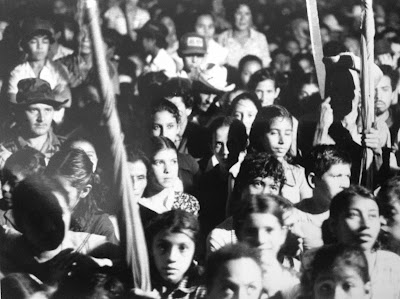 |
| The audience in Jalapa |
As our bus lurched over a rutted,
muddy road I thought about the previous day – July 4th, America's Independence
Day. I’d spent it in barrios and church learning about reconstruction and
democratization. Our group’s movements were being dutifully recorded in the
local press. The pro-government newspaper, Nuevo Diario, exploited us like gringo
celebrities, Americans who said "Si a Nicaragua y No a Reagan." It
was surely odd being publicly embraced in a country my own government was
intent on destabilizing.
The day ended with an immersion
in revolutionary faith, an evangelical service climaxing in an ecumenical mass
at Santa Maria de los Angeles. Between remarks by Father Uriel Molina and
others about Contra violence, the nuclear threat and God's protection of the
poor an acoustic band played songs of love and peace. Children roamed through
the domed church as the Americans and Nicaraguans rejoiced and reflected.
At one point Molina read a letter
from the Christian community in Jalapa. "The defense of one's life against
unjust aggression has always been justified by Christian faith," the
writer argued. Two weeks later President Reagan labeled that type of
self-defense, in the form of local militias, the building of a "war
machine" and sent warships to surround the country.
"We don't believe that power
lies in arms," Interior Minister Tomas Borge told celebrants at the mass.
Unannounced and greeted with cheers, a military hero had joined us during the
service. The US Right considered Borge a
"hardliner." His vigorous defense of an armed citizenry tended to
support the theory. But he also talked about "moral force" and his
hope that social transformation in a "new Nicaragua" would produce a
"new man and woman."
As people hugged and linked arms,
the service turned into a celebration of solidarity. Doves were freed as people
flocked to the altar for communion. This was liberation theology in vivid
practice, a revolutionary synthesis of faith and principles that had become an
engine for social change.
As we poured out of the church at
midnight, exhausted but inspired, I recalled the words of Ernesto Cardinal, a
Catholic priest and Marxist poet. After resisting Somoza and developing a
militant Catholic vision, he’d become Nicaragua's Minister of Culture. One of
his poems, written during the most brutal phase of the dictatorship, concluded:
At midnight a poor woman gave birth to a
baby in an open field
and
that is hope.
God
has said: "Behold I make all things new"
and
that is reconstruction.
 |
| Front Page, El Nuevo Diaro, July 7, 1983 (Greg's the one in the cap.) Main headline: "Viaje secreto de Jefe de la CIA" |
Struggle at the Border
The caravan reached Jalapa after
a day on the road, plus an unscheduled stop when one of the buses couldn't make
it over a washed-out section. By this time the delegation had grown to 150
people from over 30 states. The goal was to confront violence with conscience.
Once upon a time this was a quiet
place, a town of about 10,000 people in a region that produced corn, rice,
beans and about 75 percent of the tobacco grown in the country. Now Jalapa was
swollen with refugees, driven into town from homes in the mountains by Contra
attacks. Crop production was down and peasants lived in a constant state of
anxiety, girded for an invasion. Still, as we made our way to the Instituto,
our lodgings, people greeted us with smiles. The generosity of spirit was humbling.
Originally built in 1980 as a
center to train Brigadistas for the nationwide literacy crusade, the Instituto
had no beds or running water. We were tired, hungry and dehydrated -- and
shortly drenched by a rainstorm. But many people, even children, were dying in
similar circumstances – despite government vaccination programs and other
efforts to fight disease and malnutrition. No one complained.
Would a vigil and public witness make
any difference? Could it make clear that not all Americans supported US-backed
terrorism? Maybe. On a more basic level, we’d also brought food and medical
supplies. But what the people we met seemed to value most was our support and our
presence.
We were promised a military
briefing. Before that, however, we
attended a rally. In heavy rain 500 peasants squeezed into Jalapa's town hall.
As we entered the crowd parted and cheers erupted. On the stage, we lined up
with local leaders as a theologian in the delegation told the audience that
Reagan's plan for Central America did not represent the will of the American
people.
After the rally Captain Gonzalez,
who commanded about 3,000 troops in Nuevo Segovia, outlined the mathematics of
aggression: 400 murders and abductions by Contras in the last six months. The
attacks were not a recent development, however. Ever since the 1979 revolution,
the Contras had been intent on invading this remote region, about 300 miles
from Managua. The fighting intensified after 1980 with CIA advice and funding,
and training of Contras in US camps like Libertad outside Miami, owned by Cuban
exiles.
Small Contra bands frequently
crossed the border from Honduran bases, under cover of Honduran helicopters and
small planes. They abducted local leaders, ambushed travelers, burned buildings
and farm equipment, and kidnapped youngsters to carry their cargo. Occasionally
there were major operations, involving up to 600 men and mortar shelling.
The short-term objective was to
take Jalapa, Gonzalez explained. The methods included repeated attacks from at
least nine locations along the jagged border, and the indiscriminate shelling
of civilians. Sometimes the Nicaraguan army shelled Honduras in response.
The US was allegedly backing the
Contras so that they could "interdict" arms moving through Nicaragua
to El Salvador. But this was a farming region, not an ideal weapons supply
route; it faced rugged Honduran mountains over which arms shipments could reach
only Contras. No, the battle for Jalapa was a case of aggression designed to
make the region uninhabitable, turning farmland into a staging area for an
invasion force. And even if that failed, the Contras could still provoke the
Sandinistas into war with Honduras.
Action for Peace
At 7 a.m. the next day delegation
of peasants joined us on the Instituto's concrete basketball court. With
blankets as cushions, we had spent the last few hours resting on the tile
floors. Some of the supplies we used were Russian imports.
Campesinos and mothers of several
local martyrs joined the vigil under a scorching sun. They shared stories and
revealed their grief as US group unfurled banners and offered their own testimony.
One Nicaraguan woman, tearful, dressed in black, painfully recalled how the
Contras had taken her son. They had tried to "recruit" him for their
army. But when he refused to work for men who were devastating his community
they cut him into small pieces, she said. Not being able to see her son was, in
a way, more painful than the realization that he was gone.
 |
| Border vigil, July 1983 |
After the vigil we walked out of
the Instituto into a cornfield. Sandinista soldiers guarded us from a hilltop
barracks silhouetted against the sky. The border was just ahead, the route a
line of trenches that divided the fields, slashes of red earth about four feet
deep. The campesinos hid there when Huey helicopters from Honduras flew
overhead. We linked hands as people planted corn with water from our two
nations.
There were many moments of
forgiveness and mutual support that day, but the war obviously didn’t end. Yet
our presence in Nicaragua did mean something, and certainly built a deeper
commitment within members of the group to oppose this and other undeclared,
illegal wars.
Back in Managua we soon found an
opportunity to confront US Ambassador Anthony Quainton. At an Embassy event, we
asked for the justification of the covert US role in a Honduran-Nicaraguan war?
"We are trying to get back
to the original goals of the revolution" he said. The reply sounded
arrogant. Asked about the pointless violence he tried to explain that "the
killing of women and children is not the policy of our government," then
attempted to define the situation as "Nicaraguans fighting
Nicaraguans." Witness for Peace members became enraged as he defended
the Contras, claiming that they wanted to "return to democratic political institutions."
When someone said that war
wouldn’t bring peace he had to agree.
In a private conversation later,
Quainton did acknowledge that Reagan's characterization of the Sandinistas as
"totalitarian" wasn’t constructive. He also agreed that US actions such
as aid cut-offs and import sanctions were pushing Nicaragua toward the Soviets,
a situation policy-makers claimed they were trying to prevent.
"But the problem of regional
destabilization is at the head of the agenda," he said, "and that
determines policies and makes other things less important."
In other words, it made little
difference that Nicaragua had a mixed economy, open elections at the local
level, or a Council of State with representatives from various parties and
social groups. The country's social and economic progress, agrarian reform and
literacy crusade were simply cancelled out. Why? Perhaps because the existence
of a "New Nicaragua" served as a good example that raised aspirations
throughout the region. Now, that was "destabilizing" to US interests.
Reagan put it more plainly. He
wasn’t about to let "communists" get a foothold in Central America –
even if they did hold elections. The administration therefore wanted people in the US to
think that the Sandinista government was a brutal dictatorship increasing the
misery of its people. After seeing Nicaragua, however, that was very hard to
swallow.
Next:
The Hunt for the Secret Team











